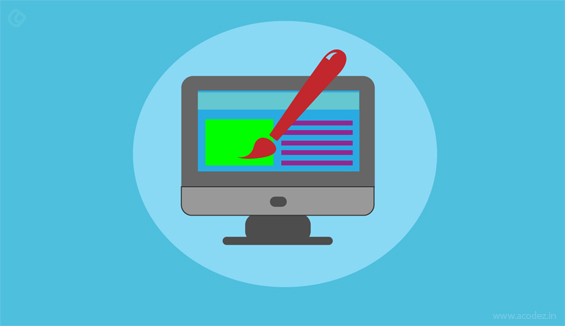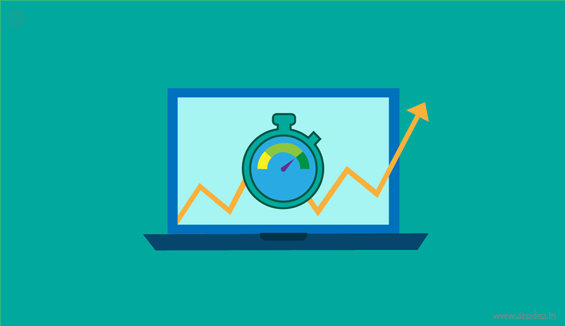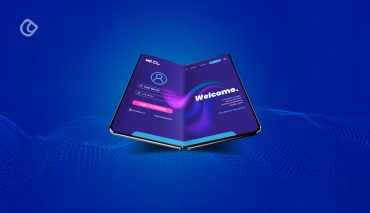Once your people arrive at your website, what do you think locks them on to it? Simple – your website’s design
The look and feel of your website, which is also part of the user experience and user interface aspects, considered the most important factor in a website design, drives customers and prospects to your website.
The first and foremost thing that you should be working upon when starting to strategize website development is its design. This is what will drive and bring about customer conversions.
Moreover, design’s role in marketing is invariably large. So, if you create good designs, this will contribute to marketing, which will drive sales and ultimately bringing in positive results.
Here we come with the best 10 web design principles to leverage into your website to make it exquisitely engaging, user-friendly and effective.
A few points that you need to keep in mind or prepare a checklist of before setting out to design your website include:
Defining the Purpose Clearly
Make sure you are clearly aware of the purpose for which this website is being designed for. Ensure that it will meet the needs of the end user. You should have a clear idea on what your visitors are looking for – entertainment, interaction, or information. This purpose should flow across all pages of your site, fulfilling the specific requirements of your website users.
Communication Should be Clear and to the Point
How do you convey the purpose? It can be conveyed only through the means of a proper communication channel. The information or content on your website should be clear, legible and easy to understand. You can always include a few tactics like organizing the information on top into headline and sub-head and then breaking long and complex sentences into bullet points and removing all clutter.
Font
When you convey the information, it should be readable. The font size that you implement here matters. Most of the times, the use of Verdana, Arial fonts that fall under the Sans Serif categories are preferred. And, the ideal font size for reading online would always be 16px.
Colors
Colors are another aspect of a web design that you should be taking into consideration to provide a great user experience. A blend of contemporary colors when chosen offers a balance and peace to the readers. It is preferable to use contrasting colors for background and text as it makes the text legible to the eye. Since emotions are closely related to vibrant colors, it is better to avoid using those.
Images
Images have an important role in the design of a website. It helps with the brand position that will connect you to your related audiences. If you don’t have many professional photos with you, it is advisable to choose some good photos from You can always include videos, graphics, and infographics to make your website app Shutter stock images ear brilliant.
Navigation
When it comes to navigation, it should be easy for people to take action and move around this website. Some of the hacks that can help with an effective navigation might be the use of clickable buttons, logical page hierarchy etc. which will help users to find information with ease.
“F” Pattern Design
According to a certain eye-tracking study, people skim across computer screens in an “F” pattern. People gaze around the top and left the side of the screen. No one checks out the right side of the screen often. But when a website is smartly and wisely designed, the user doesn’t have the time to choose a visual pattern, but rather they follow the pattern that the site owns.
Load Time
Ensure that your website doesn’t take too long to load. Some of the hacks to enhance page load times include image size optimization, compiling the code into a Central CSS or JavaScript file and minimize HTML, Javascript and CSS.
Mobile Friendly
We need not contemplate over this. But, it is necessary that you build a responsive layout that would fit into any device or screen size.
Let us take a deeper look into what are some interesting facts about website design:
The Design is More than What Hits the Eye

An excellent designer is always capable of touching the viewer’s heart and they have an inner eye that pierces into the personality of the design lying beneath. What we believe is design ends at the visual entry, which is a myth. But, the design is more and lives beyond the entrance of your website. It starts with the look, feels and experience, that your user encounters starting from the minute they entered your site until they exit.
There are two questions you should be answering if you really wish to go beyond the visual eye of your design: how and why do you expect people to be on your site??
Now, if you ask me what should be the answer for these questions; first of all, you need to understand that there is no straight answer to these except that people are here looking for solutions to their problems and your site is so full of answers.
But, their decision-making will depend on a variety of factors that include:

- Site-loading speed
- Navigation flexibility
- Content and other elements
- The time taken for an action complete and the lapse from this time to the time taken for the next action
So, it is not only the designer’s task but the duty of each and every person working on the website to ensure that it yields beautiful results. If you are working on a website, no matter whichever aspect, ensure that you contribute to making it better.
The objective of your business:
Did you know that each component on your website is related to your business’s objective in some way or the other?
It is an excellent idea to actually set apart specific goals for each of these components, which will collectively result in the main objective.
Ensure that each of these elements is aligned in synchronization with your business goals. Your focus must be on the minutest details that compile together to form your project. Collaborating all this gives rise to a great user experience.
A number of details, including the color and size of your fonts are part of your design elements that will determine whether everything is in-line with user experience. But, while you focus on the minutest details, don’t forget the bigger picture in the background, which happens many a time.
The success is in identifying the small elements that matter, while ensuring that the main design components are given attention.
User is the core of any design
The user is the supreme authority that will determine the success of your business, so apart from the business objectives your attention should shift over to your users.
From the user perspective, a website design is considered to be awesome when it helps them to achieve their goals effectively and efficiently, while enjoying each and every transition in the user’s journey.
Step into your users shoes. Think it the way they will. What will they like here, where will they like to go or what action will they prefer to take, etc. should be the questions that meander and wander in your mind when you set out to design.
This is just a simple tactic that old shopkeepers follow, though larger projects need to be perceived from various angles of online business. You can implement storytelling, user personas and others to actually get an idea of how your real users will behave while they are on your website.
These are some of the simple tricks that you can think of while designing your website and see for yourself how well it works when the project goes live.
The entire project development as a whole has an important role in this design process, which the designers are supposed to lead. Yes, others can help you identify the pain points of your users and also, the points wherein you can some cheese and butter to make the experience smoother and simpler for your people.
Designing can include sketching too
Wireframes and moodboards are some of the methods that we implement to find out whether our clients’ needs are being fulfilled. But, how can we ensure that we are working toward accomplishing end-user goals?
Sketch your user’s experiences, which will provide you with an insight into the flow of various aspects of a user’s journey across your design including the content and other details. Sketching doesn’t consume much of your time as it is easier and cheaper to get it done.
Your user attention lasts for a very short span of time, which is approximately three to five seconds, so can’t you sketch a fresh idea in nearly thirty seconds of time.
Sketch out your ideas on user experience across the layout and the design flow and then think about how your user will move across this.
Include a few boxes, lines, arrows and any shapes that you want – see the process is so simple and easy. Your sketches will connect your thought process with the real working model, while giving you a clear picture of your user’s movements across these.
You need some white space
The world of designing is in fact divided in a conflict on the need for white space. Some are of the opinion that white space is a good practice while some do not support the idea of white space. Do you know what exactly the idea behind including white spaces is?
It is to provide your users with a break while they have been straining all this time. It is necessary that you give them a break because they have been struggling a lot, their sensory organs picking up all the information and the tiny cells in their medulla oblongata processing this information into receptors, which are picked up by the brain’s sensors and the user finally realizes what they are viewing is what they want.
But, the magic behind creating an awesomeness in the white space that you use in your designs is to ensure that their relationship with other space and elements on the page is well synchronized.
Grids are more than CSS frameworks
There was a huge speculation when grids started conquering the hearts of millions and making the designer’s job easier that designing would become a lot easier job with this.
But, more than focusing on just the design part, it brings about a great deal of collaboration to help you prepare a visual feast for your users.
A simple tip when choosing grids: don’t go for the one that might seem to be easier to implement, rather select the one wherein you could ensure that the following elements can be incorporated well:
- Foundation for visual alignment of all the elements
- Creating horizontal and vertical strategy for aligning the various features
- Ensuring a tropical balance among all these elements
- Creating synchronization between the various objects
The most important thing about using a grid is that it helps to create a great visual impact for your users, while providing you with the perfect platform to collaborate all the requisite elements of your design. The perfection of this tool depends on the person handling it.
Does everything sync in?

It is important to ensure that all the important elements are aligned in rhythm to attract the human eye, and also make sure that they will yield the necessary output.
But, don’t make a fuss out of it. You can start by choosing the element that should have the greatest emphasis of all. So, when people reach your site, they will know what is important here and their focus will stay there without wandering around and disturbing their thoughts.
Draw inspiration
This is yet another important step in any design principle strategy. Why not maintain a galleria of all those things that has always created a visual impact on you. It could be anything, starting from images, videos, posters or even websites. There should be a magic in these that has sparked an idea in your mind when you have gone through these
It could be helpful at some point or other.
It will help you improvise and enhance your skills in designing and also, will give you food for thought. The next time you choose to design, you will always have some idea of what could be best, influenced by thoughts of what you have in store.
Can your design provide a solution?
We are here to provide solutions to our people. So, whenever you are setting off to design a great piece of work, ensure that it will be an answer or solution to the problems of your people. Whatever you have included on your page: examine whether these are useful or useless. What role does these have in solving the problem of your user. Does it create a problem or solve a problem?
This way you can eliminate a number of unwanted and useless items from your site. Everything, including the color of your website’s background, needs to be analyzed from this perspective before taking these off or retaining these. Because there are a lot of unwanted things that we can actually get rid off. Think about it from your customer’s perspective. Will it solve their problem or annoy them?
Your answer will ensure that you have a solution to your customer’s problem.
Be your own critique
Get some real-time users to test your design. Watch their movements, capture their actions and you can create a questionnaire and request for feedback on how they find it.
There are a lot of things that you have missed out. Your design appeals to you, but not necessarily to your users. But, when you have got real-time users to test it, you know how well it will work with others.
Once you have their feedback you can start working on your design from your perspective, by examining whether it is capable of solving a problem as we discussed in point number 9. It will help you to decide whether you have done it right or whether anything needs to be modified.
Now, you know what kind of a design will solve the problem rather than creating a headache and infuriating your people for having visited your site.
Walk yourself through the minutest details and each and every element of your site and examine how it works, the ease of use, the speed and how well your people can relate to these details.
We have been incorporating these points into our design strategy when we design and develop websites, and trust us it has helped us create awesome website designs that people love.
Follow these simple steps and you will create a great website design just like us.
Are you looking for some help with website designing?
Then, we can help you. We offer all kinds of website designing and development services.
Acodez is a leading web design company in India. We have catered to clients in India and abroad with our sophisticated set of solutions that have been customized to meet the needs of the present day. We have already served 700+ clients from across the globe and have won more than 10 international awards for our contributions to the world of web design and development.
Looking for a good team
for your next project?
Contact us and we'll give you a preliminary free consultation
on the web & mobile strategy that'd suit your needs best.










Wow! Never thought there are principles for website designs. If I had to choose one of these, it would be the “Sync in” as it gives identity to a brand. Great read, thanks for sharing.
Nice to read your blog and these points are really true in every website.
It’s really great and informative blog regarding website design.
Nice to read your blog and these points are really true in every website. Thank you for posting article about 10 Effective Web Design Principles.
Thanks for this website tips.